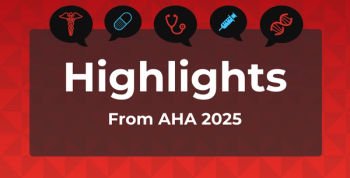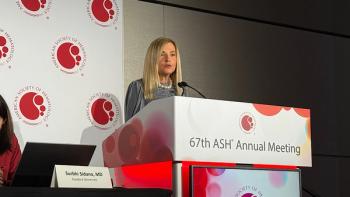
SGLT2s, GLP-1s, Finerenone Have Unique Benefits in CKD, Diabetes: Meta-Analysis
Key Takeaways
- SGLT2 inhibitors were most effective for reducing HbA1c, blood pressure, and body weight, with canagliflozin showing the lowest adverse event likelihood.
- GLP-1 receptor agonists, particularly liraglutide, excelled in lowering LDL-C and maintaining a favorable safety profile, with semaglutide showing renal safety benefits.
The findings highlight important differences between therapies in managing blood glucose, blood pressure, lipids, and adverse effects in this high-risk patient population.
There are important differences between 3 major drug classes for treating patients with type 2 diabetes (T2D) and non-dialysis chronic kidney disease (CKD) when it comes to managing blood glucose, blood pressure, lipids, and adverse effects in this high-risk patient population. A recent analysis compared the efficacy and safety of sodium-glucose cotransporter 2 (SGLT2) inhibitors, glucagon-like peptide-1 (GLP-1) receptor agonists, and finerenone (Kerendia; Bayer).1
The study, published in
SGLT-2 Inhibitors Lead in Blood Sugar and Weight Control
SGLT-2 inhibitors, including drugs like empagliflozin (Jardiance; Boehringer Ingelheim and Eli Lilly) and canagliflozin (Invokana; Mitsubishi Tanabe Pharma Corporation), were the most effective in reducing hemoglobin (HbA1c), systolic and diastolic blood pressure (SBP and DBP), and body weight when compared with placebo. The mean difference (MD) in HbA1c reduction was –0.33 (95% CI, –0.52 to –0.15), with SBP reductions ranging from –5.52 to –1.50 mmHg.
Empagliflozin ranked highest for lowering HbA1c and DBP, while bexagliflozin (Brenzavvy; TheracosBio) and canagliflozin were most effective for reducing SBP and body weight. Canagliflozin also had the lowest likelihood of any adverse event among all drugs analyzed.
GLP-1 Agonists Best for LDL-C and Blood Glucose
Among GLP-1 receptor agonists, liraglutide (Victoza, Saxenda; Novo Nordisk) stood out for its ability to lower low-density lipoprotein cholesterol (LDL-C) with a mean difference of –1.58 to –1.41 (95% CI, –2.05 to –0.81). GLP-1 receptor agonists were also effective for blood glucose control and had a favorable safety profile overall. Semaglutide (Novo Nordisk) showed the least harm to estimated glomerular filtration rate (eGFR), suggesting renal safety benefits.
Finerenone Offers Cardiovascular and Renal Safety Benefits
Finerenone, a non-steroidal mineralocorticoid receptor antagonist, significantly lowered SBP compared with placebo (MD –1.65; 95% CI, –2.48 to –0.81) and had the lowest incidence of urinary tract infections. The drug demonstrated favorable cardiovascular and renal safety, making it a valuable option, particularly for patients with high blood pressure and risk of renal complications.
Safety Findings Vary by Drug
Safety profiles varied across individual agents. Luseogliflozin (Lusefi; Taisho Pharmaceutical) had the lowest incidence of hypoglycemia, ertugliflozin (Steglatro; Merck and Pfizer) had the lowest risk of acute kidney injury, and finerenone had the lowest rate of urinary tract infections. The authors noted that these distinctions may influence personalized treatment choices, especially in patients with comorbid risks.
The analysis supported the overall safety of SGLT2 inhibitors, GLP-1 receptor agonists, and finerenone in patients with T2DM and non-dialysis CKD while highlighting specific benefits unique to each class. SGLT2 inhibitors were most effective for glucose control and weight loss, GLP-1 receptor agonists excelled in lipid and glucose management, and finerenone was most impactful in lowering SBP with fewer urinary adverse events.
Recently, at the
The authors of the analysis stated that their findings contribute substantial evidence to the existing body of research to assess the benefits and risks associated with these drugs.1 "It is imperative to consider the potential adverse effects of these treatments when formulating personalized treatment plans for individual patients," they concluded.
References
1. Guo J, Wei M, Zhang W, et al. Clinical efficacy and safety of sodium-glucose cotransporter protein-2 (SGLT-2) inhibitor, glucagon-like peptide-1 (GLP-1) receptor agonist, and Finerenone in type 2 diabetes mellitus with non-dialysis chronic kidney disease: a network meta-analysis of randomized clinical trials. Front Pharmacol. 2025;16:1517272. Published 2025 Mar 27. doi:10.3389/fphar.2025.1517272
2. Grossi G. SGLT2 inhibitors show renal benefits in HF and CKD as prescribers target uptake gaps. AJMC. April 15, 2025. Accessed April 25, 2025.
Newsletter
Stay ahead of policy, cost, and value—subscribe to AJMC for expert insights at the intersection of clinical care and health economics.









































